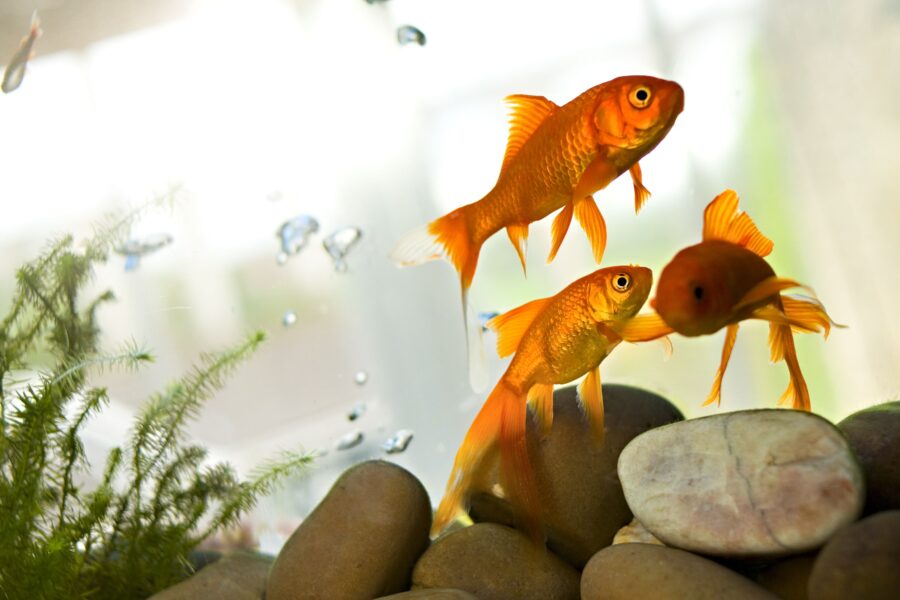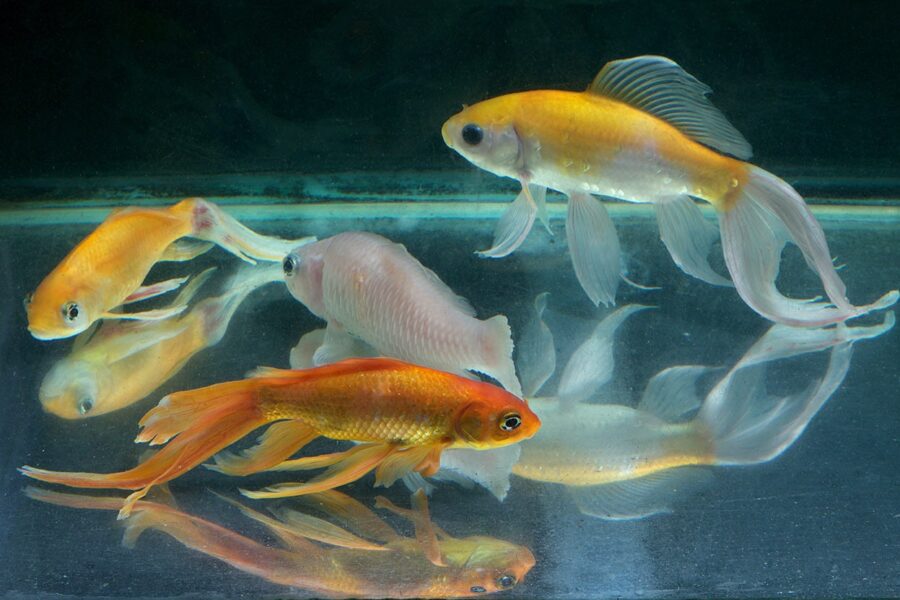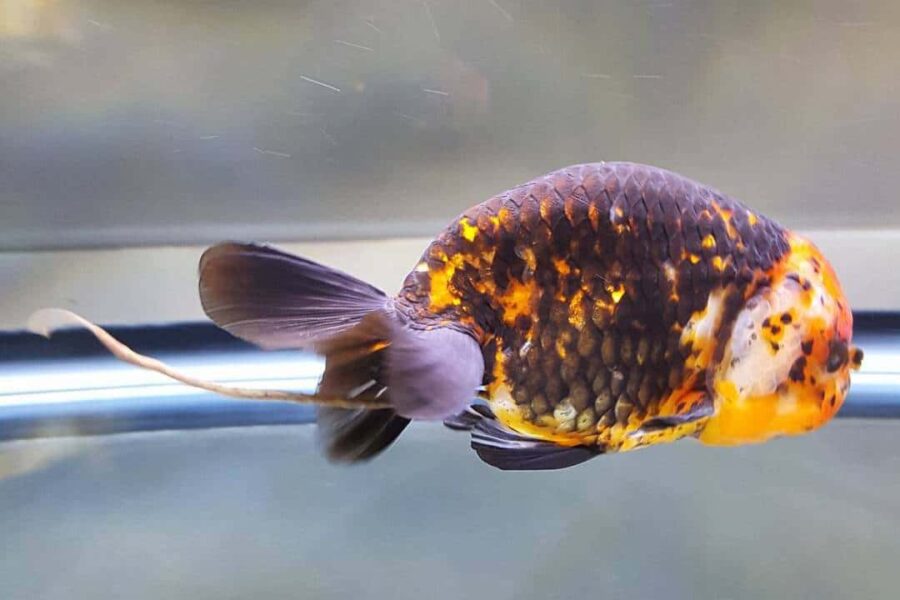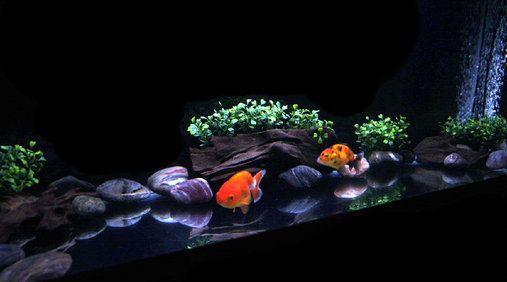
Listen up, goldfish guardians! In the hustle-bustle of our lives, we sometimes forget that our shimmering friends also have specific needs. Do you know how long your goldfish can survive without food? Ever wondered about the significance of water temperature and quality for your pet fish? Well, fret not, as this guide will enlighten you about these and more!
Preparing for a trip is always stressful. But when you’re a goldfish owner, the stress can double! From adjusting your pet to a new feeding schedule, to preparing according to the length of your trip and inspecting the environmental conditions of your aquarium – it’s no cakewalk. But don’t worry, we’ve got you covered! Through this guide, we’ll navigate these rough waters together.
Understanding Goldfish Needs

We all love our finned friends, don’t we? So, let’s take the first step to understanding your goldfish friends’ basic needs. This will be paramount when traveling is in the cards for you.
Knowing How Long Goldfish Can Survive Without Eating
Unlike your “hangry” roommate, a goldfish can survive without food for a week to two weeks. Remember, though, that’s in a pinch! It’s not a fantastic idea to usually starve your fishy friend. It’s like skipping your morning coffee. You can do it, but it’s far from pleasant.
Let’s swim over to their second big need. Can you guess what it is?
The Importance of Water Temperature and Quality for Goldfish
Goldfish aren’t divas, but they sure love quality H2O! Above all, they need clean, filtered water at a stable temperature between 62 to 72 degrees Fahrenheit. It might be chilly for us, but Goldie will think it’s a spa day, every day.
But wait – there’s more to their needs. The third major thing is the one we enjoy every morning. It’s time to turn on the lights, folks!
The Value of Light to Your Goldfish’s Health
Our goldfish buddies need about 12 hours of light daily. Too much can cause algae growth, and too little can cause them to lose color. It’s a pretty neat trick! Ensure Goldie’s aquarium light is compliant with your travel schedule.
Well dear reader, we’ve covered the basics. Ready for some tips on travel prep? Hold onto your hat (or your sinking castle decor) because we’re moving on.
Pre-Travel Preparations
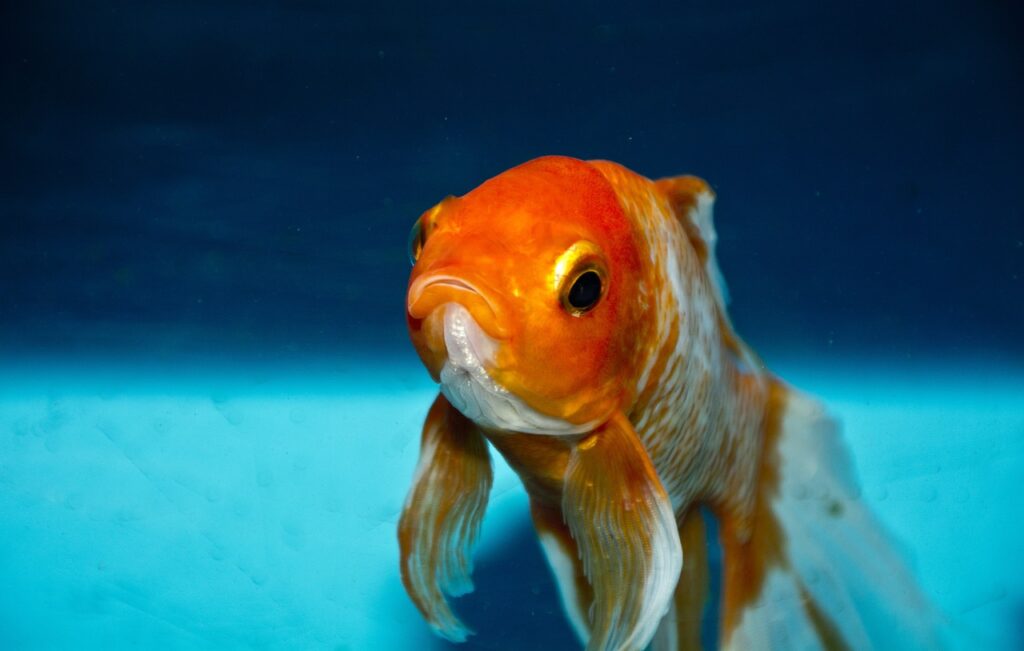
Before you pack and jet off, let’s get some groundwork done. Remember, a little preparation now could save your goldfish from going “glub glub” in silent protest while you’re sipping margaritas on a beach.
Adjusting Your Goldfish to a Feeding Schedule
Establishing a feeding schedule for your goldfish is crucial, especially when planning to use an automatic feeder during your absence. To do this, start by synchronizing their feeding times with the automatic feeder. Over time, your goldfish will anticipate their feeding time, akin to a “tummy alarm clock.”
Remember, setting up for a vacation is simpler than deciding what to pack. The key is understanding the right feeding quantity and frequency for your goldfish. For a comprehensive guide, refer to our other article: Goldfish Meals: How Often Should They Be Fed? This knowledge will ensure you set up the feeder appropriately, meeting your goldfish’s needs while you’re away.
Preparing Accordingly to the Length of Your Travel
A weekend getaway or a two-week Euro trip? Your fish take it differently than you might. For short trips, the auto-feeder has your back. “But what about long trips?” I hear you ask. Then you need some more help (Hint: we’ve got some options laid out further down), but for now, let’s ensure your fish’s Airbnb (aka the aquarium) is in tip-top shape.
Scrutinizing the Environmental Conditions of Your Aquarium
You wouldn’t enjoy vacationing in a dodgy hotel, right? Same goes for your goldfish. Check the aquarium’s water temperature, monitor the pH levels and nitrate concentration closely. Sound scientific huh? But remember, you are striving for comfortable and healthy conditions for your fins-tastic pals.
By doing this, you’re taking a major step toward ensuring your goldfish enjoy their “staycation” while you’re globetrotting. Up next, we are going to dive into the magical world of automatic feeders. Be ready for your life (or at least your travel prep) to be revolutionized!
Using Automatic Feeders
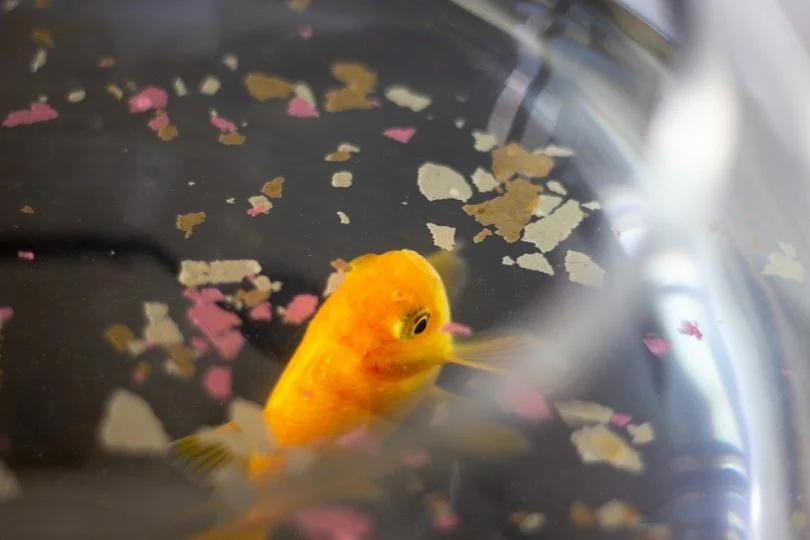
Ahh, technology! What a marvelous, helpful, and sometimes downright confusing thing it has become. But fear not, it’s your loyal travel partner when it comes to fish care. Let’s dive into the world of automatic feeders.
Benefits of Automatic Feeders
Automatic feeders are a goldfish’s best friend. They keep your aquatic buddy fed regularly, even when you’re gallivanting across the globe. Automatic feeders are reliable, ensuring your fish doesn’t go on an involuntary diet. Plus, they help maintain water health by avoiding overfeeding, the leading cause of dirty tank syndrome. Yes, that’s an actual thing.
Now, you’ve seen the light, and are ready for the tech plunge! But how do you go about choosing the right automatic feeder?
Choosing the Right Automatic Feeder
Once you’ve successfully chosen and purchased an automatic feeder based on the 3S: Schedule, Size, and Setup, the next step is to figure out how to make the most of this investment. Here’s what you need to do:
- Unpack: Carefully unpack your automatic feeder. Check if all parts are included and intact. Make sure to keep the user manual close for reference throughout this process.
- Inspect: Look at your automatic feeder. Understanding its structure and how it works will make the installation process much easier.
- Setup: As per the user manual, set up the feeder on your goldfish tank. If the manual is not clear, you might be able to find video tutorials online specific to your model.
- Fill it up: Fill the feeder with the amount of food necessary based on your goldfish’s dietary needs and the duration of your absence.
- Schedule feedings: Use the feeder’s programming system to schedule feedings. Depending on your model, you might be able to set specific times for the feedings or even control the portion sizes.
- Test it out: Before leaving your goldfish alone with the feeder, test it out a couple of times to make sure it dispenses the right amount of food at the correct times.
- Monitor: For the first few days, keep an eye on the feeder to ensure it’s working as it should. Check if your goldfish is getting used to it.
And remember, before you decide on the type of feeder to buy, it’s always a good idea to look at multiple options. Here’s a comprehensive guide on 10 Top Automatic Goldfish Feeders Options that can help you make an informed choice. Now you’re all set to ensure your goldfish is well-fed even when you’re away!
Setting Up Your Automatic Feeder
Setting up the feeder is simpler than untangling your headphones. Just attach it to the fish tank following the given instructions. Next, fill it with fish food. Set the feeding schedule as per your goldfish’s regular meal times. Lastly, run a few test feeds to ensure it’s working correctly. Before you know it, you’ll be more hands-off than a mime in a glass box.
Well, that’s automatic feeders for you: a handy, trusty assistant in your goldfish care journey. But what if you’re looking for more options or back-ups? Keep your fins cool, we’ve got that covered in the next section!
Other Care Options

Let’s get down to brass tacks! Despite all your best plans, sometimes technology fails. And when it does, it’s always good to have a backup strategy. Let’s delve into some other options to keep your finny friend happy and healthy.
Hiring a Pet Sitter
Think babysitters are just for two-legged kids? Think again! For the price of a few bills that feature Benjamin Franklin, pet sitters can handle feeding and maintenance, providing a refreshing human touch while you’re away. Just be sure to choose a sitter who’s reliable, trustworthy, and – of course – loves goldfish as much as you do.
You know that neighbor who’s always too eager to borrow a cup of sugar, but you never really took the time to get to know? Now’s your chance to turn that friendly nuisance into a valuable resource!
Asking a Neighbor For Help
The help next door can be a lifesaver. Reach out to your trusted neighbors. Bonus points if they have kids who’d love to take on the role of a temporary pet parent. Just remember to provide all the instructions and walk them through the feeding process.
For our last option, we’re heading to the pet store. Grab your wallet because we’ve got a shopping trip to make!
Utilizing Feeding Blocks
Feeding blocks were practically invented for this dilemma. They’re long-lasting food sources which dissolve slowly in the water and are great for short trips. While not ideal for longer absences, they can supplement automatic feeders and add that extra layer of assurance.
With these options in your arsenal, you should be well-prepared for any trip. But before you head out, let’s go through a quick checklist to ensure everything’s in order. Are you ready? Let’s dive into our final section.
Pre-Travel Checklist
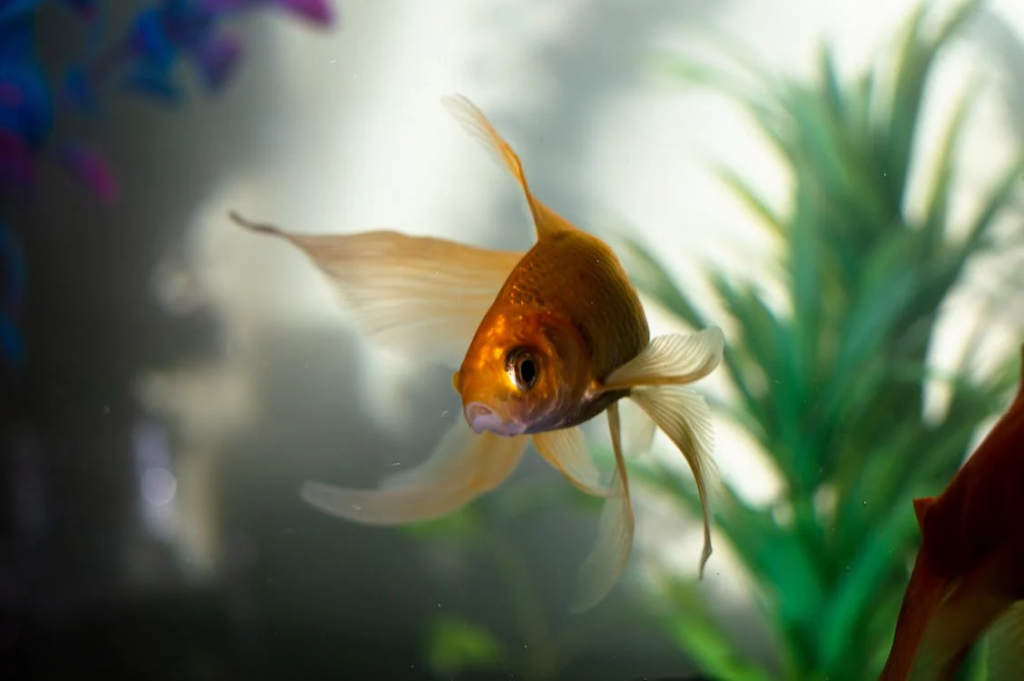
Before you pack up your suitcase and step out that door, it’s the perfect time for a summary. Goldfish, remember, have got memory lasting for seconds, at least that’s what most believe, not that it’s scientifically proven.
Verifying the Setup
An important checklist item—verifying your setup. Double-check that the auto-feeder is working like a charm and there’s no technical skateboard-like flip, leaving your fish meal-less. Validate whether your fish’s home, aka the aquarium, is all set for your absence. If there’s an Air Bobby in view…I mean an air bubble, do applaud yourself, that’s a confirmation of good oxygen supply.
Extra Precautions for Extended Trips
Traveling for an extended period? Ah, the freedom of the open road! But consider your goldfish…are they comfortable? If any change in plan means you are away for longer, arrange for a sitter or someone responsible to take a quick check. Undoubtedly, better safe than sorry.
Final Run-Through of Your Care Plan
Alright, you’re almost there. Take a moment to pat yourself on the back. You’ve got this! Now, for a final trip around your goldfish’s watery domain. Have a disciplined approach to your travel checklist, and be assured, there won’t be any guilt trips during your actual trip.
And with that, we wrap up our pre-travel checklist—a simplistic guide to sailing smoothly through your journey and keeping your fishy friends safe. Up next, we’ll dive into the joy of returning home and figuring out if your goldfish remembers you. Haha! That’s a story for another day, my dear friends. Keep those fins flapping!
Wrap Up
Caring for your goldfish requires you to understand their specific needs, such as nutritional intake, water temperature and quality, as well as the significance of light for their health. As you prepare for travel, adjusting your goldfish’s feeding schedule can help them cope better with your absence. The length of your travel often determines the care measures put in place, which includes assessing the aquarium’s environmental conditions.
Automatic feeders can come in quite handy as they ensure your goldfish stays fed while you’re away. Selecting the right automatic feeder is essential and proper setup is key. Not forgetting there are other care options such as hiring a pet sitter, asking a neighbor for help, or using feeding blocks for convenience. Before you set off on your journey, make sure all is set: double-check the setup, take extra precautions for longer trips and do a final run-through of your care plan to ensure your goldfish stays happy and healthy despite your absence.
Frequently Asked Questions (FAQ)
Question: How long can a goldfish survive without eating?
Answer: A goldfish can survive without food for about a week. However, this is not recommended as it depends on the goldfish’s health, size, and water condition.
Question: How important is water temperature and quality for goldfish?
Answer: Water temperature and quality are crucial for a goldfish’s health. They thrive in a stable environment with the temperature around 68-74 degrees Fahrenheit and pH levels between 7.0 and 8.4.
Question: What is the role of light in a goldfish’s health?
Answer: Goldfish need approximately 12 hours of light per day, for their standard biological functions, which includes the proper digestion of food.
Question: Why should I use an automatic feeder?
Answer: Automatic feeders guarantee consistency in feeding your goldfish, especially when you are traveling. They dispense a pre-measured amount of food at set intervals.
Question: How do I choose the right automatic feeder?
Answer: Consider factors such as the size of your tank, number of fish, type of food, battery life, and timer functionality when choosing an automatic feeder. Ensure it fits and works well with your aquarium setup.
Question: Can I hire a pet sitter for my goldfish?
Answer: Yes, hiring a pet sitter is a great alternative if you’re traveling for a long period. They can monitor your goldfish, feed them and take care of the aquarium environment.
Question: Are feeding blocks suitable for goldfish?
Answer: Yes, feeding blocks can slowly release food over an extended period. However, they can also affect water quality, so they are better suited for short-term use.
Question: What are some extra precautions for longer trips?
Answer: Ensure your automatic feeder is fully functional, have a backup power plan, and consider hiring a pet sitter or asking a trusted friend to check in once in a while.

